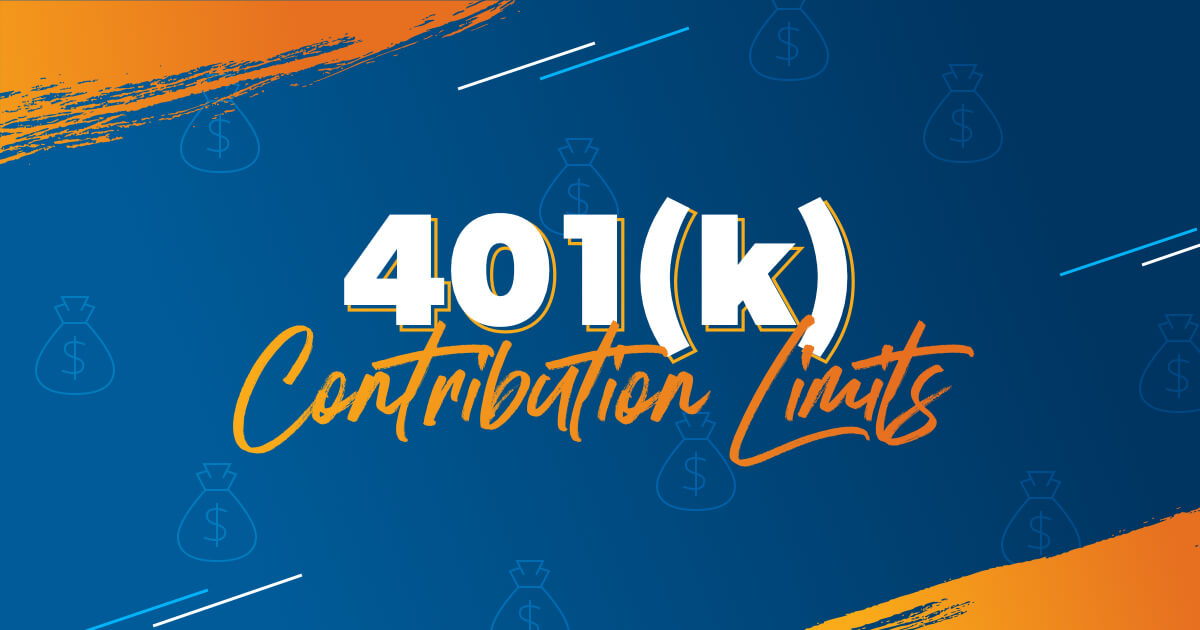What Are the 401(k) Contribution Limits for 2025?
7 Min Read | Mar 20, 2025

Key Takeaways
- The 401(k) contribution limit for 2025 is $23,500. That’s the most you can invest in your employer-sponsored retirement plan this year.1
- The catch-up contribution limit for those age 50 and older is still $7,500. But starting in 2025, there’s a higher catch-up contribution limit of $11,250 for those age 60–63.2
- The employer contribution limit for 2025 is up to 100% of your salary or $46,500, whichever is less. Total employer-employee contributions can’t exceed $70,000.3
- The 401(k) compensation limit caps how much of your income can be used to calculate your employer match. For 2025, the compensation limit is $350,000.4
What if you had access to the same type of investing account millionaires use to build their wealth? You’d jump on the chance, right? Well, there’s good news—because believe it or not, millionaires don’t roll the dice on flashy investment trends. Nope! More than anything else, they invest money in their humble, not-so-flashy 401(k) plan at work. Which means you can do it too.
According to Ramsey Solutions’ The National Study of Millionaires, 8 out of 10 millionaires invested in their company’s 401(k) plan. They put money into their accounts month after month, year after year, until one day they looked up and their net worth was seven figures.
Okay, great—but how do you actually get there? And how much can you contribute to your 401(k) these days?
| 2024 | 2025 | |
| Employee Contributions | $23,000 | $23,500 |
| Employer-Employee Combined Contributions | $69,000 | $70,000 |
| Compensation Limits | $345,000 | $350,0005 |
What Are the 401(k) Contribution Limits for 2025?
You can invest up to $23,500 in your 401(k) retirement plan in 2025, and that limit also applies if you’re saving with a 403(b), 457 plan or Thrift Savings Plan (TSP). In most cases, all your contributions to a 401(k) are due by the end of the calendar year.
If you have access to multiple employer-sponsored retirement plans, that’s awesome! But your total contributions across all your retirement plans can’t exceed the annual limit.
You should also know, these contribution limits apply to both traditional and Roth 401(k)s. Both plans are employer-sponsored retirement savings accounts, but they’re taxed differently.
The money you put into a traditional 401(k) is taxed later, when you make withdrawals from your account. That means you’ll pay taxes on the money when you take it out of the account in retirement.
But with a Roth 401(k), it’s the other way around—you pay taxes on the money before you sock it away (so you don’t have to pay taxes later). That means saving for retirement with a Roth account gives you tax-free growth and tax-free withdrawals in retirement. If your company offers a Roth 401(k) option, take advantage of it! Because it just doesn’t get any better than (say it with us) tax-free growth.
Catch-Up Contribution Limits
When’s the best time to plant a tree? Twenty years ago. When’s the second-best time? Today. The takeaway: If you’re getting a late start on saving for retirement, the most important thing is to actually get started.
Maybe you’ve fallen behind because life threw you a curveball (or two). Or maybe you woke up at 50 years old and noticed there’s more silver on your head than in your nest egg. Either way, it’s not too late for you to save for retirement.
How much will you need for retirement? Find out with this free tool!
If you’re 50 or older, you can save an extra $7,500 as a catch-up contribution (on top of the $23,500 you’re already allowed, for a total annual limit of $31,000). And starting in 2025, there’s a new catch-up provision that allows anyone age 60–63 to save an extra $11,250 per year in their 401(k), for a total annual limit of $34,750.6 Nice!
| 2024 | 2025 | |
| 401(k) Catch-Up Contribution (Age 50 and Older) | $7,500 | $7,500 |
| 401(k) Higher Catch-Up Contribution (Age 60–63) | N/A | $11,2507 |
What Is the Maximum an Employer Can Contribute to Your 401(k) in 2025?
If there’s anything better than tax-free growth, it’s free money. One of the best things about a 401(k) is that most workplaces offer some kind of employer match on your contributions.
Unfortunately, there’s a limit to how much your employer can contribute to your account (thanks a lot, IRS!). In 2025, your employer can legally contribute up to 100% of your salary or $46,500, whichever amount is less.
Why $46,500? Because the total combined contributions from both employee and employer can’t exceed $70,000. And since the contribution limit for employees is $23,500, that means your employer can put in up to $46,500—and not a dollar more.
Listen, we don’t know if you’ll ever find a workplace that’ll be willing to help you invest in your future like that. But if you do, never ever quit that job.
Is There an Income Limit for 401(k) Contributions?
The short answer is no. If you have access to a 401(k) plan at work, you can put money into it no matter how high or low your salary is.
But listen up, high-income earners: The IRS has a compensation limit that puts a cap on how much of your salary and compensation is eligible for a 401(k) match. For 2025, that limit is $350,000.8
Let’s look at an example to help it all make sense:
- You make $500,000 in 2025.
- Your company offers a 4% match on your 401(k) contributions.
- You max out your annual contributions at $23,500.
- Instead of giving you the full match (4% of $500,000 is $20,000), your employer only contributes $14,000.
Why didn’t they pay in the full $20,000? Because they’re only allowed to apply the match on up to $350,000 of your compensation—and 4% of $350,000 is $14,000.
We get it—IRS math doesn’t make sense in the real world. If it helps, the thinking behind this extra rule is to make things fairer for those with less to invest. Hey, we’re just the messengers here.
Just don’t let anything stop you from using every tool you have to build wealth—and leave a positive legacy for your family. When broke is normal and changing your family tree is weird, weird is definitely better.
Make an Investment Plan With a Pro
SmartVestor shows you up to five investing professionals in your area for free. No commitments, no hidden fees.
How Much Should You Save for Retirement?
Once you’re out of debt and have a fully funded emergency fund in place, you’re ready to start putting your money to work for the future. But exactly how much should you invest for retirement? Answer: Invest 15% of your gross income for retirement in accounts like your Roth 401(k) and Roth IRA.
For example, if you have an annual salary of $75,000 and want to hit that 15% target, your goal is to save $11,250 each year for retirement. Let’s use those numbers as an example and walk through it step by step.
1. Take the 401(k) match.
Let’s say your employer offers a traditional 401(k) with an employer match. That’s the perfect place to start saving for retirement. Your first step? Take full advantage of your employer match. It’s free money!
If you make $75,000 a year and your employer matches 5% of your contributions, invest 5% ($3,750) into your 401(k) so you can get that match. And listen, you don’t count your employer match as part of your 15%. Think of the match as the icing, not the cake.
Okay, now you’ve got $3,750 dedicated toward your 15% goal of $11,250. So, what about that remaining 10% (or $7,500)?
Since you’ve invested up to your match, you can explore tax-advantaged options outside of your employer plan. And that’s where the Roth IRA comes in.
2. Contribute to a Roth IRA.
The Roth IRA (Individual Retirement Account) is the peanut butter to the 401(k)’s jelly—they go better together. The beautiful thing about the Roth IRA is that it lets you enjoy tax-free growth—and withdrawals—in retirement. (Don’t you just love the sound of that?)
In 2025, you can save up to $7,000 in a Roth IRA—and make an extra $1,000 catch-up contribution if you’re age 50 or older.9
Sticking with our example from above, if you maxed out your Roth IRA by investing $7,000, your total retirement savings would then sit at a nice, fat $10,750 ($3,750 + $7,000). That’s just $500 short of your 15% annual goal of $11,250.
3. Invest the rest in your 401(k).
All right, so you invested up to the match in your 401(k) and maxed out your Roth IRA. You still haven’t hit 15% and have $500 left to invest. Don’t worry. In this example, since you’re well below IRS limits for contributions, you can go back and invest that $500 in your 401(k). And ding, you’re at 15%! Now you can sit back and watch your retirement savings grow.
But what if you went all out and tried maxing out your 401(k)? That might be a stretch, but let’s just run some numbers real quick.
If you maxed out your contributions in 2025—investing $23,500 in good growth stock mutual funds—and didn’t invest anything else for 40 years, you could end up with around $1.8 million in your account. Now that’s something to think about!
Next Steps
- Still curious about what maxing out your 401(k) contributions would look like and when it makes sense? Our article Should You Max Out Your 401(k)? covers all that and more.
- If you want to do a deep dive on 401(k)s and other investments, check out Ramsey’s Complete Guide to Investing.
- Ready to invest? Check out our SmartVestor program and get connected with an investment pro who can answer all your questions and help you get started.
This article provides general guidelines about investing topics. Your situation may be unique. To discuss a plan for your situation, connect with a SmartVestor Pro. Ramsey Solutions is a paid, non-client promoter of participating Pros.



